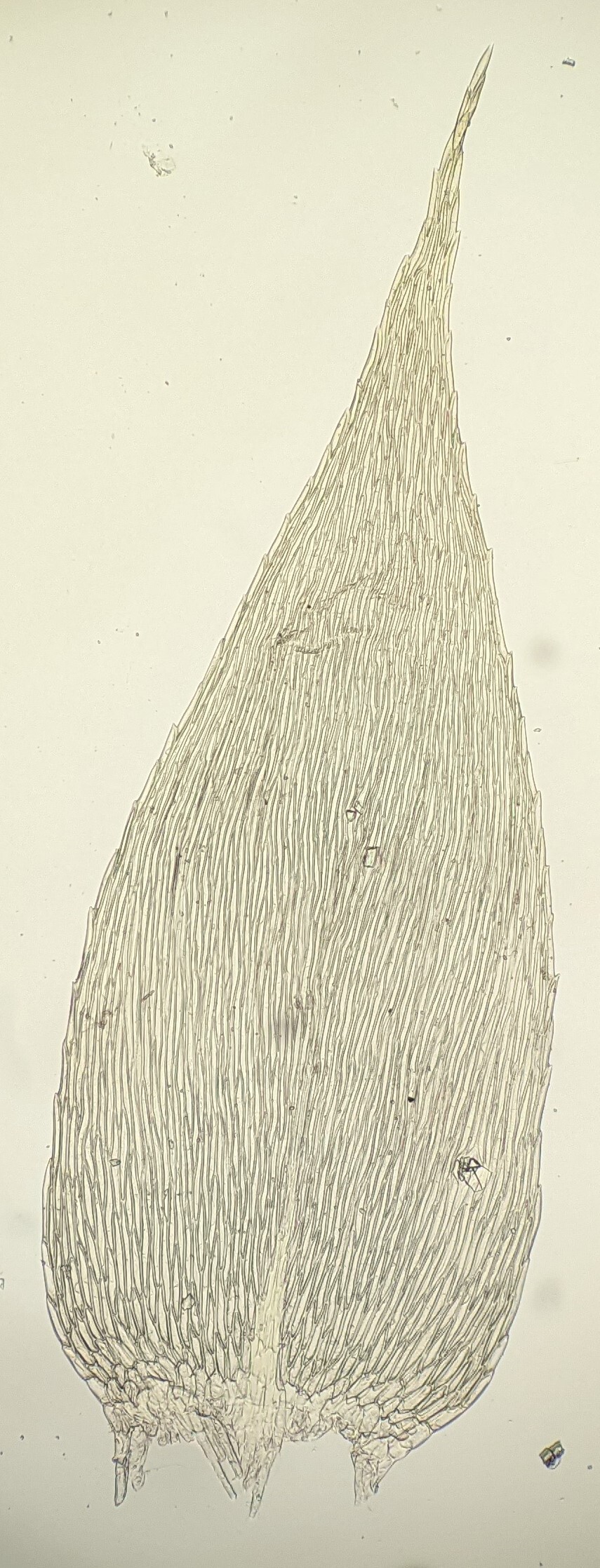Brachythecium rutabulum
(Hedw.) Schimp.Autoicous. Loose and untidy mats on soil, rocks, logs and trunks. Stems prostrate to ascending, to at least 80 mm long, sparingly and irregularly or pinnately branched, pale green to brown, with fascicles of pale brown rhizoids at abaxial leaf bases, central strand present, branches commonly 5–20 mm long. Stem and branch leaves slightly differentiated; cells linear, 60–140 μm long, 7–11 μm wide, smooth, shorter and wider near base; alar cells short or elongate-rectangular, occasionally quadrate, enlarged, 30–45 μm long, 18–23 μm wide, in a group of c. 10 indistinctly differentiated cells to a diffusely delimited ovate or transversely triangular group reaching 25–50% of distance from leaf margin to costae. Stem leaves erect and subimbricate to spreading when moist, straight or slightly homomallous, scarcely altered when dry, broadly ovate to ovate-lanceolate, occasionally triangular, 1.7–3 mm long, 0.6–1.4 mm wide, concave, not or slightly plicate; costae extending 2/5–3/4 leaf length, not ending in an abaxial spine; apex acuminate, without a hair-point; margins denticulate, sometimes only near apex, plane or often slightly recurved at base, without a border. Branch leaves ovate to almost orbicular, 1.5–2.5 mm long, 0.6–1.2 mm wide, slightly plicate when dry; apices acute or rounded, often with short apiculus; margins denticulate. Setae 1.5–3 (–4) cm long, red-brown, scabrous. Capsules horizontal, oblong-ovoid, curved, c. 2–3 mm long. Operculum conic, c. 1.3 mm long.
GleP, VVP, VRiv, GipP, OtP, Gold, CVU, GGr, DunT, NIS, EGL, EGU, WPro, HSF, HNF, OtR, Strz, HFE, VAlp. Widespread from the inland slopes of the Great Dividing Range and south in a variety of habitats including rainforest, coastal vegetation, grassland, and beside creeks and lakes in sclerophyll forest and woodland. Also SA, Qld, NSW, ACT and Tas. Cosmopolitan.
 Spinning
Spinning


